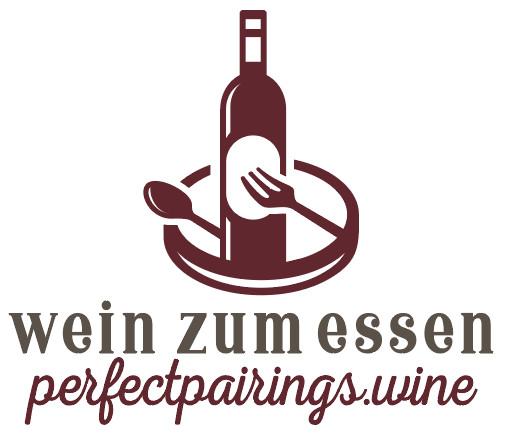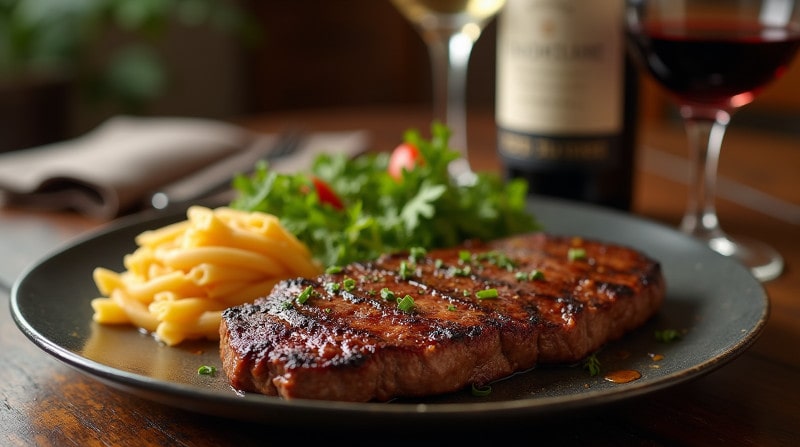The perfect combination of wine and food – how to create the ideal food pairing
The combination of wine and food can elevate a dish to the next level – or completely destroy its flavour. But don’t worry: you don’t have to be a sommelier to find the right wine for your food! In this guide, you’ll learn the basic rules of wine pairing, practical tips and simple rules of thumb that will help you make the perfect choice every time.
1 Why is the right wine pairing so important?
Wine is more than just a drink – it enhances aromas, balances flavours or creates contrasts. The right pairing ensures that food and wine complement rather than compete with each other.
A few examples: ✔ A fresh Riesling balances the spiciness of an Asian dish. ✔ A strong Cabernet Sauvignon enhances the roasted flavours of a steak. ✔ A sweet dessert wine emphasises the fruitiness of a chocolate cake.
2. the 3 golden rules of wine pairing
1️⃣ Birds of a feather flock together
- Light dishes need light wines.
- Strong dishes harmonise with heavy wines.
🔹 Example:
- Grilled chicken & Chardonnay → Both are light & harmonious.
- Beef steak & Cabernet Sauvignon → Both strong & flavourful.
2️⃣ Set contrasts for balance
- Fatty food needs acidity (e.g. champagne with fried food).
- Sweet dishes benefit from even sweeter wine (e.g. blue cheese with port).
🔹 Example:
- Sushi & Riesling → The sweet Riesling balances out the savoury soy sauce.
- French fries & sparkling wine → The sparkling wine breaks through the fat of the fries.
3️⃣ Regional fits together
- Italian food goes well with Italian wines.
- French cuisine harmonises with French wines.
🔹 Example:
- Pizza & Chianti – Italian classics, perfectly matched.
- Coq au Vin & Burgundy – French chicken dish with the matching red wine from Burgundy.
3. which wine goes with which food? (Quick overview)
✔ Meat & wine:
- Beef → Cabernet Sauvignon, Malbec, Syrah
- Pork → Pinot Noir, Zinfandel
- Poultry → Chardonnay, Pinot Noir
✔ Fish & seafood:
- White fish (e.g. cod) → Sauvignon Blanc, Chablis
- Fatty fish (e.g. salmon) → Pinot Noir, rosé champagne
- Seafood (e.g. prawns) → Albariño, Vermentino
✔ Vegetarian dishes & wine:
- Grilled vegetables → Tempranillo, Côtes du Rhône
- Pasta with tomato sauce → Sangiovese, Barbera
- Asparagus → Grüner Veltliner, Silvaner
✔ Cheese & wine:
- Soft cheese (Brie, Camembert) → Champagne, Chardonnay
- Hard cheese (Parmesan, Gruyère) → Barolo, Chianti
- Blue cheese (Roquefort) → Port wine, Sauternes
✔ Desserts & wine:
- Chocolate desserts → Port wine, Amarone
- Fruity desserts → Moscato d’Asti, Riesling Spätlese
4. common mistakes in wine pairing – and how to avoid them
❌ Mistake #1: Wine that is too strong for a light dish ➡ Better: Choose wines that don’t ‘kill’ the food (e.g. no Barolo with fish).
❌ Mistake #2: Acidity & acidity intensify each other too much ➡ Better: Choose a medium-acid wine (e.g. Pinot Grigio instead of Sauvignon Blanc) with tomato sauces or lemon dishes.
❌ Mistake #3: Sweet wine with dry food ➡ Better: only serve sweet wines with suitable dishes (e.g. Sauternes with foie gras).
5 Conclusion: Combining wine and food – it’s easy!
With a few basic rules, you can create the perfect wine pairing without a sommelier course.
✅ Light dishes → light wines, strong dishes → strong wines ✅ Acidity balances fat, sweetness goes with sweetness ✅ Regional combinations almost always work
➡ Save this guide for your next dinner! 🍷✨
✔ ‘Which wine pairing is your favourite? Write it in the comments!’ ✔ ‘Fancy more? Subscribe to our newsletter for weekly wine tips!’ ✔ ‘Share this guide with your friends & become a wine expert!’

